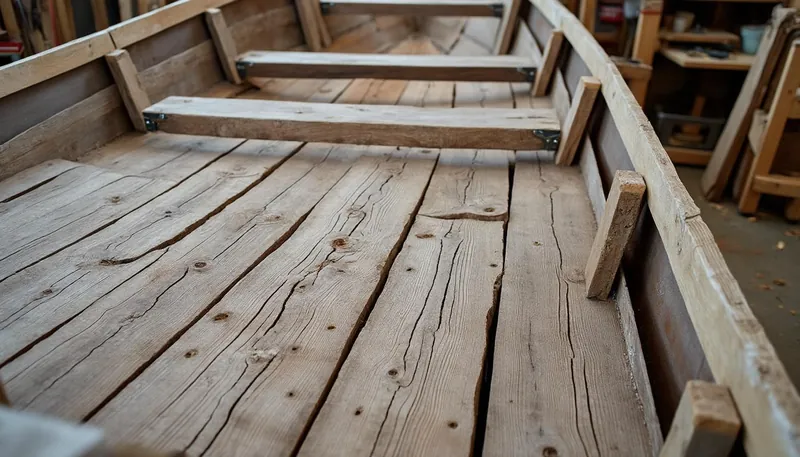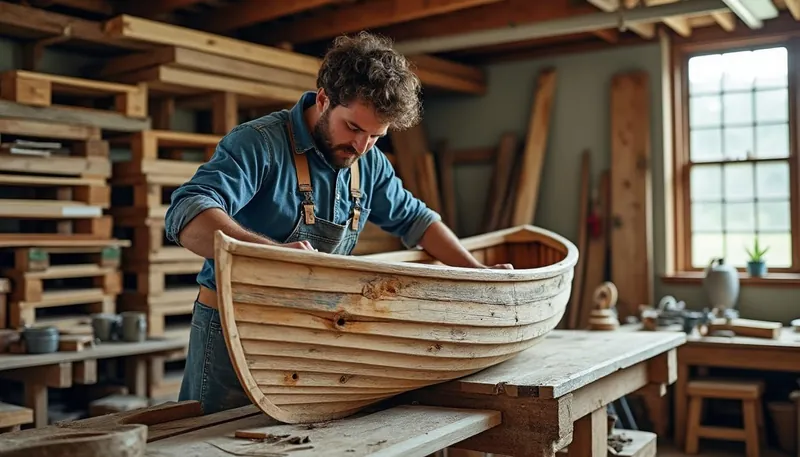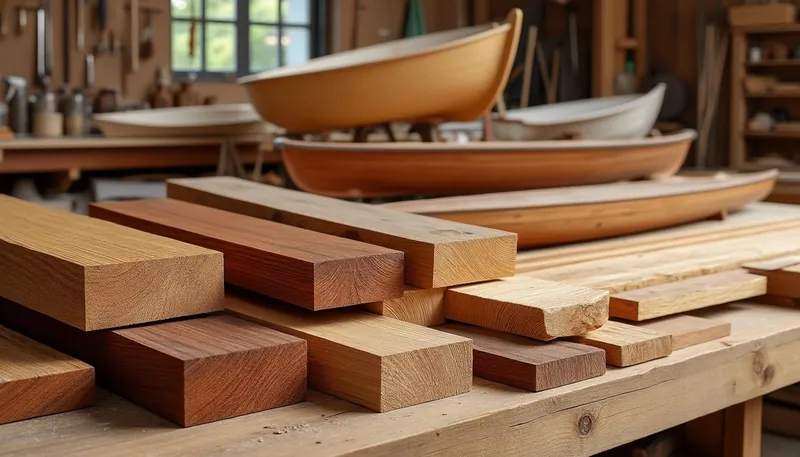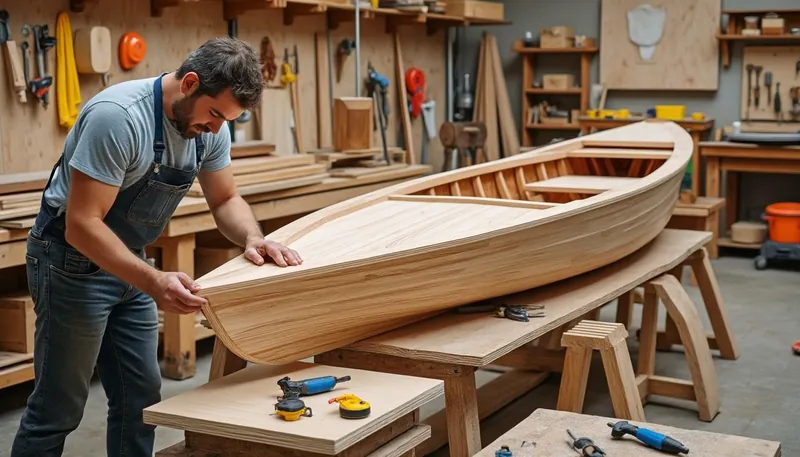The maritime industry is undergoing a remarkable transformation as more people and companies are seeking sustainable alternatives to traditional boat-building materials. With finishes and designs that often prioritize aesthetics and functionality over environmental consequences, the question of whether recycled wood can be used to build a boat is both timely and pivotal. As we navigate through issues related to sustainability, eco-friendliness, and innovative practices in boat construction, recycled wood emerges as a compelling option that confronts modern environmental challenges head-on. From ensuring durability to promoting sustainability, let’s explore the various dimensions of using recycled wood in boat building and its potential to revolutionize naval architecture.
Briefly put, the eco-friendliness of recycled materials makes them attractive options for conscientious boat builders. Using materials that have previously served another purpose helps lessen the need for deforestation and raw resource extraction. Innovations in boat construction, such as integrating modern adhesives and enhanced engineering techniques, have made it possible to use recycled wood without compromising quality or performance. In fact, companies like EcoBoat, GreenHull, and WasteWood Marine are pushing boundaries by implementing such materials in their latest designs. Moreover, the advent of lives sustainably and the quest for certifications like FSC (Forest Stewardship Council) make such an endeavor not only commendable but also a necessity as we proceed into 2025 and beyond.
Understanding Recycled Wood in Boat Building
Recycled wood refers to wood that has been salvaged from old structures, furniture, or other sources rather than harvested from living trees. The applications in boat building can vary widely, from reclaimed timber used in hulls to recycled ship siding lines the interiors. One of the key advantages of recycled wood is the allowance for a diverse range of styles and textures that can enhance the look of a boat. 🌲 Here is a table outlining the types of recycled wood commonly used in boat building:
| Type of Recycled Wood | Source | Main Benefits | Challenges |
|---|---|---|---|
| Hardwood Beams | Old buildings | Durable, beautiful grain | Potential rot, need for treatment |
| Old Pallets | Shipping and storage | Low-cost, plentiful | Quality varies, often not treated |
| Decking from Old Boats | Decommissioned vessels | Water-resistant, well-weathered look | Limited availability, restoration needed |
The concept of using reclaimed timber aligns well with the ethos of organizations like SustainShip and RecycleCraft, who emphasize sustainable practices in their operations. According to a recent study, reclaimed wood can lower carbon emissions significantly compared to using newly harvested wood, offering favorable outcomes for the environment and boosting the creativity of boat designs. 🔄
Durability and Performance of Recycled Wood
When it comes to boat building, the durability of materials is of utmost importance. Traditionally, wood types like oak, mahogany, and teak have been cherished for their inherent properties such as resistance to decay and strength. However, the durability of recycled wood largely depends on the sourcing and treatment processes involved. A well-maintained and properly treated reclaimed wood can perform exceptionally. Companies like RenewMarine are rising to the occasion by developing methodologies to treat recycled wood adequately, ensuring limitations like warping or degrading are minimized. 🌊
- Waterproofing: Using modern epoxy resins can significantly enhance the moisture barriers necessary in marine applications.
- Strengthening: By bonding recycled wood with other materials, such as plywood or resin, durability is further amplified.
- Aesthetic Appeal: The unique weathered look of recycled wood often brings character to the boat, standing out from modern mass-produced options.
Moreover, modern technology enables superior testing to confirm the strength and durability of recycled wood materials. The testing of marine plywood made from recycled materials has proven to meet necessary performance standards for boats, thereby fostering confidence to builders committed to eco-friendly practices.

Environmental Impact of Using Recycled Wood
This brings us to one of the most critical aspects of marine construction today—the environmental contributions of using recycled wood in boat building. The impact of industrial material production on the Earth isn’t merely a problem of the present but resonates deeply into the future. By opting for recycled wood, boat builders are not only lessening the burden imposed on ecosystems through deforestation but are also minimizing waste. 🌍
Considering that about 40% of the world’s timber supply is used for construction, the environmental benefits of recycling and reusing wood are massive. Companies like EarthWave Boats are making strides in promoting awareness around this concept, focusing on not just the boat’s build but its entire lifecycle, from construction to the point when it might eventually be decommissioned.
- ❗ Reduced Deforestation: Using recycled wood helps conserve forest cover, thus enhancing biodiversity.
- ♻️ Waste Reduction: Salvaging wood prevents it from ending up in landfills.
- 💡 Mastery of Material Use: Skilled craftsmanship can transform old wood into highly functional marine components.
Additionally, a growing industry of upcycling means that many boat builders are exploring ways to incorporate other recycled materials such as metals and plastics, creating boats that are more eco-efficient and hold a reduced environmental footprint. Thus, while using recycled wood alone brings numerous benefits, it’s often a part of a more extensive eco-friendly material movement within naval architecture.
Cost Considerations and Accessibility
Despite its worthy causes and benefits, using recycled wood presents its own set of challenges, particularly with costs. The availability of quality reclaimed wood can be inconsistent and can drive prices up. 🚀 Builders must also account for the labor and time involved in restoring and preparing recycled wood for marine use. Craftsmanship, quality checks, and aware sourcing all contribute to final costs and availability, potentially making recycled wood boats less affordable for everyday consumers.
| Material Type | Average Cost per Cut | Availability Score (1-10) |
|---|---|---|
| Reclaimed Timber | Varies greatly based on type | 5 |
| Old Pallets | Low cost, around $5 | 8 |
| Second-hand Marine Plywood | Moderate, around $50 | 4 |
Innovative Practices in Recycled Wood Boat Building
By engaging with the community aspects of boat building, innovative practices have emerged where local artisans and engineers merge ideas and approaches to optimize the use of recycled materials. Such collaboration frequently leads to discovering new applications and methods in integrating recycled wood blended with synthetic materials, further enhancing the performance of the final build. 🚀
Modern boat builders are utilizing advanced technologies such as CNC machining to precisely cut and shape recycled wood, significantly reducing waste. Innovations like “sandwich” construction techniques, which combine recycled wood with layers of plywood or composites, are also becoming popular, thereby providing increased strength and stability.
- 🔄 Creative Design: Unique contours and quirky configurations made possible due to high tech cutting tools.
- ⚙️ Innovative Bonding Techniques: Special adhesives ensure material integrity even when using reclaimed components.
- 🎨 Eclectic Aesthetics: Each wooden vessel comes with its narrative, reflecting the materials and craftsmanship involved.
The rise of companies such as WoodWave showcases how innovative practices combined with sustainability create exciting opportunities for boat builders suffused with respect for the mileage of materials. As we enter a realm of possibilities regarding sustainability, the future of recycled wood in boat building remains bright and full of potential.
Challenges and Future of Recycled Wood Boat Building
While the present encourages exciting advancements in recycled wood boat building, significant challenges lie ahead. Not only is the consistency of quality important, but also the ongoing education regarding the maintenance and performance of these eco-friendly vessels. The public perception of wooden boats often incorporates outdated notions that they require excessive upkeep compared to their fiberglass counterparts.
To counter these misconceptions, educational initiatives orchestrated by groups like ReWood Marine aim to provide information on correct maintenance practices, demonstrating that modern wooden boats built with recycled wood and proper treatment can indeed require less intervention than conventional wisdom suggest. 🛠️
- ✨ Market Awareness: Educating possible customers on the benefits of choosing recycled wood boats.
- 📚 Tool Development: Innovating tools that showcase the resilience and attributes of recycled wood.
- 🏛️ Community Support: Engaging local communities in sharing knowledge and skills related to sustainable practices.
This holistic approach to green boating offers the potential for vast improvements in ecological footprints and promotes values of craftsmanship and sustainability, creating shared journeys towards more effective environmental stewardship.
Can recycled wood really withstand the marine environment?
Yes, with the proper treatment and selection of types, recycled wood can be very durable in marine applications, especially when treated with modern epoxy resins and protective coatings.
What types of recycled wood are best for boat building?
Hardwood beams and old decking from decommissioned ships are popular choices as they offer a great combination of durability and aesthetic appeal.
Are there any specific certifications I should look for?
Yes, look for FSC-certified wood, which ensures that the timber has been sourced sustainably and responsibly.
Do recycled wood boats require more maintenance?
With modern treatments and proper care, recycled wood boats can require minimal maintenance compared to traditional wood boats.
How does using recycled wood impact the cost of boat building?
While using recycled wood can sometimes be more expensive due to sourcing and preparation costs, it ultimately contributes to reduced environmental impact, highlighting the importance of sustainability over mere cost.


